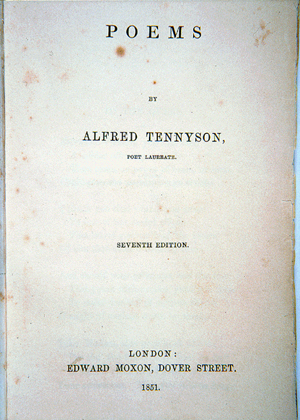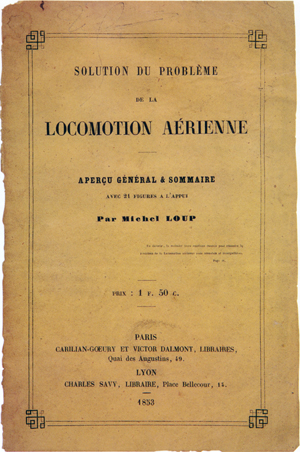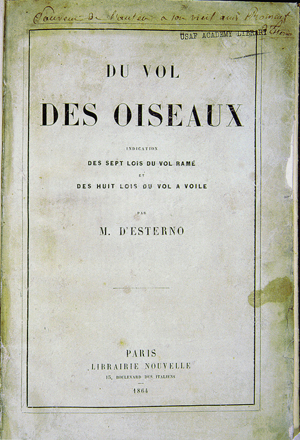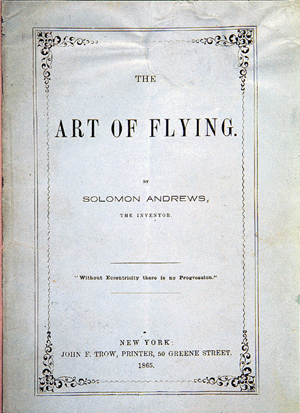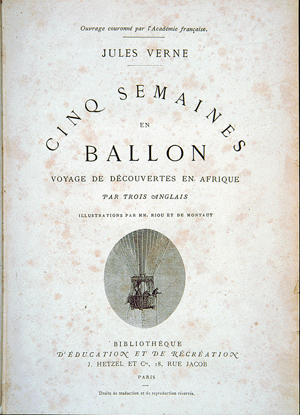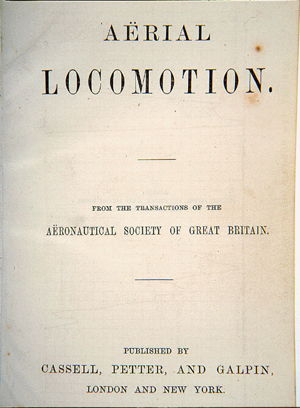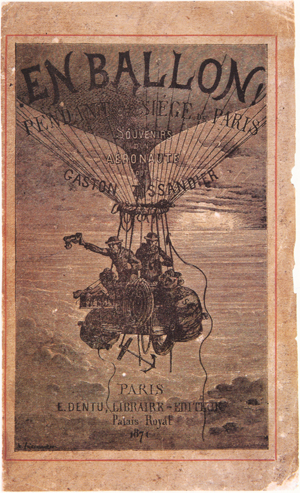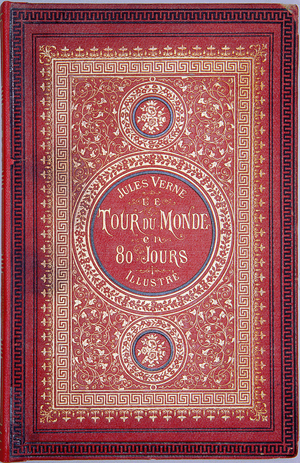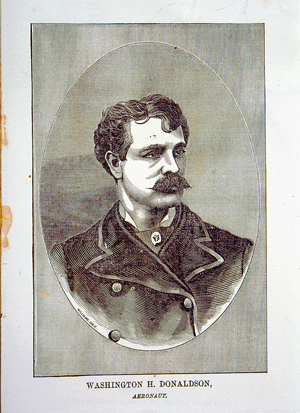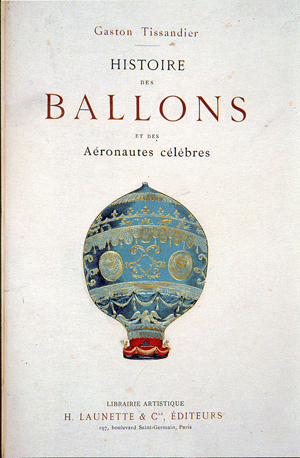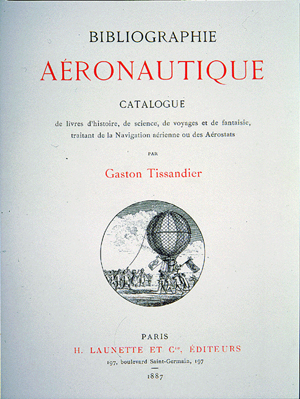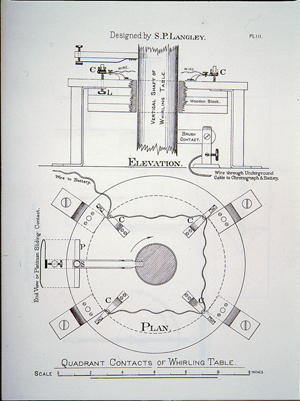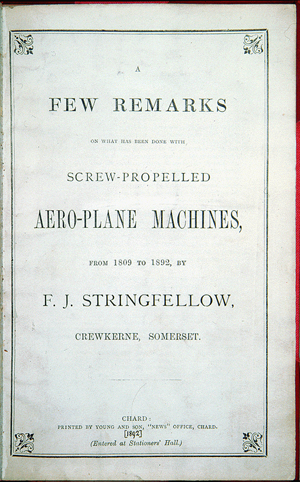Paris: G. Masson, 1878. 67, [1] p. incl. front., illus., plates (part double) 22.5 cm.
TLB276.G4T61
Brockett 11942; Gamble 820
Bibliographic note: This volume is ex libris Gaston Tissandier. The Gimbel collection also contains a second copy of this edition; and a Nouvelle édition, also 1878 and ex libris Gaston Tissandier. In addition to those volumes by Gaston Tissandier specifically cited here and elsewhere in this book, the Gimbel collection contains the following items: ...Application de l'Électricité à la Navigation Aérienne; l'Aérostat Électrique à Hélice de MM. Albert et Gaston Tissandier ... Notre Présentée à la Société d'Encouragement le 11 janvier 1884... Paris, Imprimerie J. Tremblay, 1884. 16 p. illus., fold. pl. 26.5 x 22.5 cm.; Les Ballons dirigeables. Application de l'électricité à la navigation aérienne, par Gaston Tissandier... Ouvrage accompagné de 35 figures et de 4 planches hors texte. Paris: Gauthier-Villars, 1885. 2 p.l., [vii]- xii, 108 p. incl. front. illus., plates, map. iv double pl. 19.5 cm., Brockett 11871; Gamble 1350; Les Ballons dirigeables; Expériences de M. Dupuy de Lôme en 1872, par Gaston Tissandier... Paris: E. Dentu, 1872. vii, 62 p. illus. 18 cm.; Deux Conférences sur les aérostats et la navigation aérienne, par Gaston Tissandier; 1st La Métérologie en ballon; Conférence faite au Congrès scientifique de Lille, le 21 août 1874. 2nd la Direction des Aérostats; Conférence faite à la Sorbonne, le 3 mai 1883. Suivies du catalogue des projections relatives aux aérostats. Paris: A. Molteni, [1884]. 87, [1] p. incl. front. 19 cm.; Histoire de mes ascensions; Récit de Quarante-cinq Voyages aériens (1868-1888) par Gaston Tissandier... Paris: M. Dreyfous, [pref. 1888]. 2 p.l., ii, [ix]-xxiv, 308 p. incl. front., illus., plates, diagrs. 26.5 cm.; La Navigation aérienne; l'Aviation et la direction des aérostats dans les temps anciens et modernes, par Gaston Tissandier... Ouvrage illustré de 99 Vignettes. Paris: Hachette et Cie, 1886. 2 p. l., ii, 334 p., il. incl. illus., plates, front. 18.5 cm.; Les Martyrs de la Science. Ouvrage Illustré de Trente-quatre Gravures sur Bois, Compositions de Camille Gilbert. Paris: M. Dreyfous, [1879]. 334 p. illus. 25 cm.; Le Présent et l'avenir de l'aéronautique, par Gaston Tissandier ... le 19 septembre 1889. 39 p. 20 cm.; La Photographie en ballon, par Gaston Tissandier... Paris: Gauthier-Villars, 1886. vii, 45 p., il. incl. illus., plates, front. (mounted phot.) 21 cm.; Science, Patrie; Conférence faite par... le 29 novembre 1889, au siège de l'Association des Dames françaises... Amiens: Delattre-leNoel, 1889. 15 p. 21 cm; Simples Notions sur les ballons et la navigation aérienne par Gaston Tissandier, avec un Frontispice par Albert Tissandier et 36 vignettes par G. Mathieu. Paris: Librairie illustrée, [1876]. viii, [9]-125 p., il. incl. front., illus. 16.5 cm. (ex libris Gaston Tissandier).

